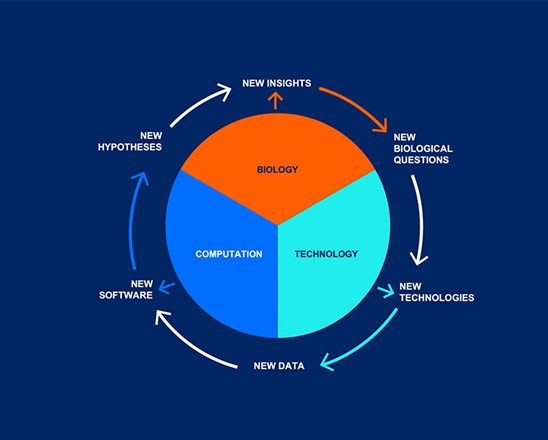Biological research has traditionally been reductionistic in its approach, meaning it dissected biological systems into their constituent parts and studied them in isolation. Although this approach led to significant progress in the field, it was not without limitations. After all, biological systems essentially constitute highly complex integrated networks, and health and disease are functions of the changing dynamics of these networks. Thus came about the need for a more holistic and antireductionistic approach, which led to the introduction of the systems concept in biology. Another advantage of this strategy is its hypothesis-free unbiased approach rather than a hypothesis-driven study aiming to prove or disprove its postulations. The study of systems biology as a distinct discipline was launched far back in 1966 by systems theorist Mihajlo Mesarovic, but the real thrust came in the 1990s with the birth of functional genomics, making large quantities of high-quality data available, and the explosion of computing power, allowing the possibility of more realistic models. From the beginning of the 21st century, it has been used in a plethora of biological contexts and has transformed biological science.
Modern systems biology is essentially interdisciplinary, tying molecular biology, the omics, bioinformatics and non-biological disciplines like computer science, engineering, physics, and mathematics together (as evident from the image above). The computational approaches in systems biology apply a wide spectrum of mathematical formalisms across different scales, ranging from data-driven top-down methods to model-driven bottom-up methods, and from static qualitative models to dynamic quantitative models. The knowledge of systems biology also guides the better designing of tools for synthetic biology, often referred to as the sister discipline of systems biology. Synthetic biology helps to construct artificial tools to achieve particular biological functions. This often involves microbial engineering to aid bioremediation, biodegradation, bioproduction, and bioconversion, resulting in industrial enzymes, therapeutic proteins, chemicals, small molecular pharmaceuticals, biofuels and biomaterials.
Till the last decade, its applications of systems biology were mostly limited to academic laboratories, but presently it is rapidly moving to the clinic. Research shows that since the 1990s, the one area that has seen the maximum and most consistent rise in the application of systems biology is medical research, more specifically involving vaccines, diseases (including cancer), and drugs. The advent of systems biology has also resulted in a shift in the biomedical scene from the trial-and-error-based medicine to P4 (predictive, preventive, personalized, and participatory) medicine and introduced the concept of systems medicine. Broadly speaking, the emerging applications of systems biology are in the development of pathway-based biomarkers, global genetic interaction maps, systems approaches to identify disease genes, and stem cell systems biology.
Despite its early successes, there are challenges galore for this relatively young field. The very premise of systems biology drives scientists to combine large-scale multi-omics data, i.e., the combination of genomics, transcriptomics, proteomics, metabolomics, epigenomics, pharmacogenomics, glycomics, lipidomics, interactomics, phenomics, fluxomics, biomics, etc. to create a more holistic understanding. However, true multi-omics integration is still challenging as many specific analytical tools and experimental designs used for individual omics do not sufficiently allow comparisons or intelligent integration across multiple omics disciplines. Also, there exists a lack of adequate purpose-built databases and analytic tools like pathway and data visualization tools. Besides, there are various questions arising about the true utility of the multi-omics approach as they have hardly yielded any significant groundbreaking results or mechanistic insights till now. Notably, it receives limited funding, enjoys limited connectivity and collaboration between professionals of different omics disciplines, and is yet to gain traction with the public. Other major flaws with systems biology lie in the calibration of computational models and that it lacks a clear account of what biological systems are. Therefore, transcending these challenges is the way forward for this already booming discipline.

